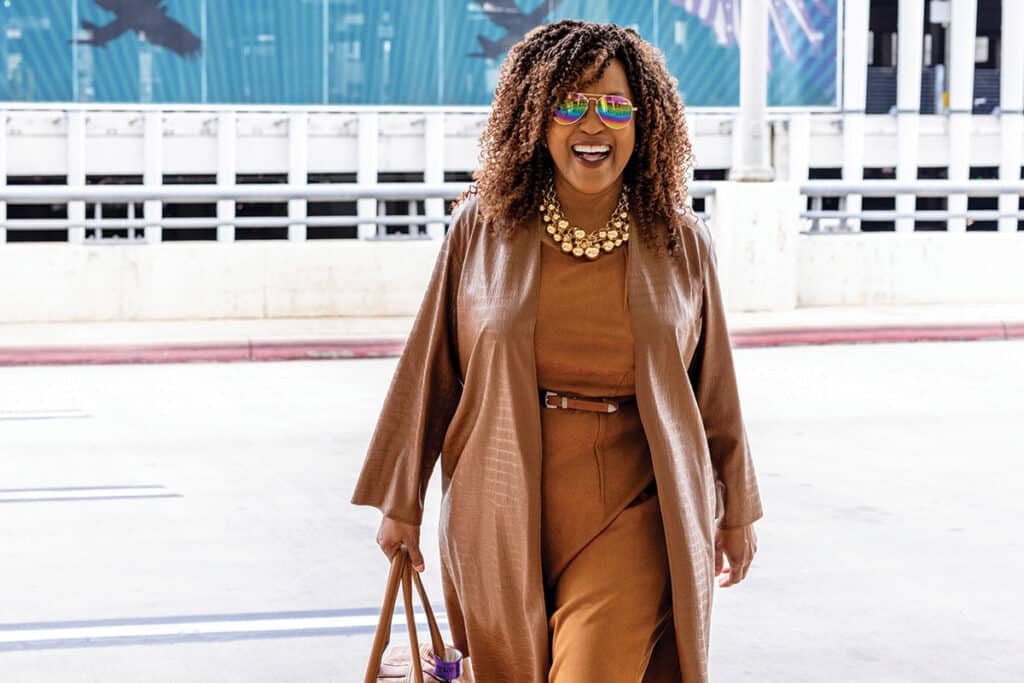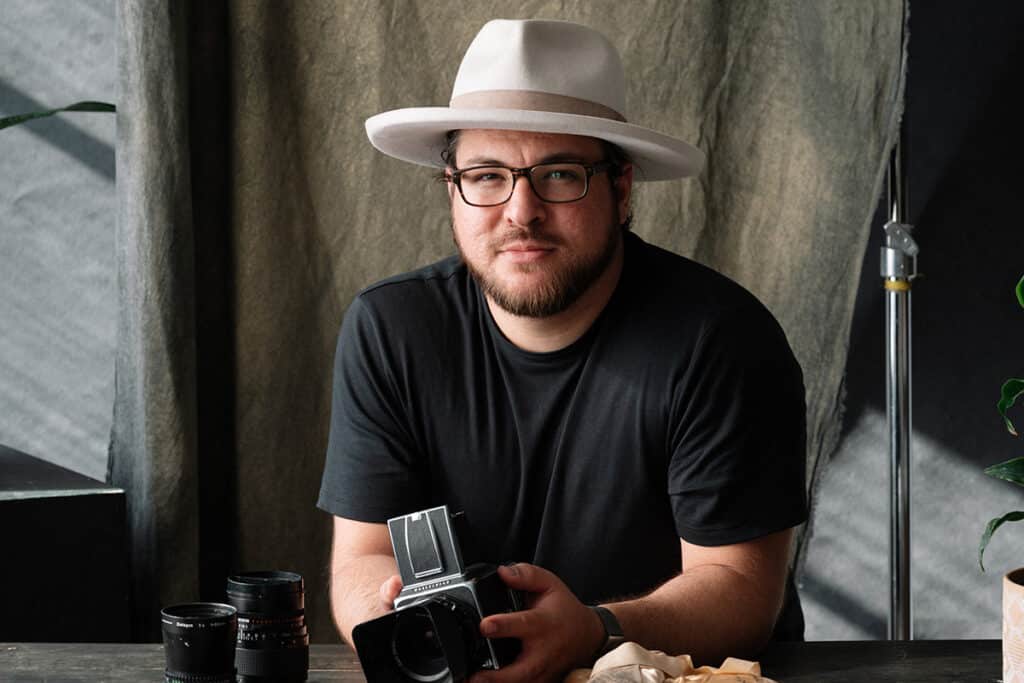In today’s fast-paced world, it isn’t uncommon to see women in highly competitive jobs working hard to achieve goals, moving up the corporate ladder into positions of great responsibility, accomplishing important things and garnering the respect of their peers.
For women in sports, it seems, it’s no different. The three athletes highlighted in this article are not only physically fit, they have made their sport a priority in their lives and have committed themselves to attaining a level of competency and achievement that few others can claim. Their ages cross three decades, proving that mental toughness, physical fitness and a can-do attitude are far more important than youth. Their stories are inspiring and offer great motivation to all who are ready to take their sport and their fitness to the next level.
Deanna Savo-Benge, runner
It’s fair to say Deanna Savo-Benge can run circles around the average person — male or female. Born in Southern California, she came to Texas 26 years ago, when she joined the Army and served as a Medical Corpsman at Fort Sam Houston. “I loved Texas so much, I decided to stay,” she says. By day, Savo-Benge is a certified pediatric hematology and oncology nurse. She spent over two decades working at Santa Rosa Children’s Hospital in critical care in the Bone Marrow Transfer Unit, taking care of children diagnosed with cancer. Today, she is a school nurse for S.A.I.S.D. at Lanier High School, working with at-risk children. She also serves as an endurance coach to Jackson Middle School cross-country track team, Eisenhower Middle School track team, Alamo Heights summer track rabbits, Team “Speed” Epilepsy team-in-training for marathons and assistant coach volunteer for the Lanier High School girls’ cross-country team.
But by night — or by early, early morning, if you want to get specific — Savo-Benge is a competitive long-distance runner. She ran her first marathon at age 18 with a qualifying time for the Boston Marathon, though she didn’t run Boston until years later. (If you know anything about marathons, you know that simply qualifying for the Boston Marathon is a feat in itself and something many runners aspire to their entire running careers.) “Running was always natural for me,” she says. “I remember doing relays in elementary school. I could beat every girl but Sue Saunders,” she laughs. “My parents would put me in team sports, but I never did well. I did well in solo sports. And I always knew that I belonged to running.” Savo-Benge ran throughout her high school and college years, but it wasn’t until her late 30s that she became a competitive runner. “Someone saw me running and said I should start running with the Fleet Feet Sports Store running group. So I went to a couple of training runs. Within a week, I was running with the men,” she recalls.
For Savo-Benge, this was a pivotal moment in her future running career: “I can’t really explain what happened, but it started there. I’ve always been competitive. I think it was the formal training and the structure of the running group that made the difference. That year, I got hooked up with José Iniguiez, founder and owner of IAAP, a race management company. He started coaching me, and I spent three years running with him.” In 2004, Iniguiez put her in her first marathon in over two decades. She was 42 years old. “I ran an elite time for my age group. I ran the marathon in three hours and one minute. José was convinced I was going to make the Olympic trials. I started running super fast after that,” she says. Over the past eight years, Savo-Benge has run nine marathons and qualified for the Boston Marathon nine times. She has also run in numerous races all over the world and has been sponsored by shoe companies such as Fila and Spira at different times in her running career.
But her success doesn’t come without hard work and discipline. For Savo-Benge, training begins each morning at 4:30 a.m. (“I have to get my workout in early because I know I have to be at work.”) Though many of us exercise on a daily basis, she understands the difference between an exercise buff and a competitive athlete: “To me, an athlete is someone who is committed to a sport that goes above and beyond the actual daily routine of exercising. They are self-disciplined enough to invest a percentage of their time, up to 50 percent, and dedicated to their sport to be competitive in it. I think if I was just running to stay in shape, I wouldn’t be doing the mileage, the speed work and the mental training that I do to be competitive in my field.” And, she admits, competitive running can be a very isolating and selfish sport. “Unfortunately, I have to put things aside and be a little bit selfish. Especially when I am getting ready for a race. My whole day is focused around what I have to do when I get home. I’m constantly reassessing my training,” she explains. But for Savo-Benge, it is a worthwhile sacrifice. “Running is, for me, a huge stress reliever. It’s also a great way to stay in shape. I enjoy the hard work and the payoff,” she says. She also enjoys the competitive aspect of her sport, adding, “When you compete against women you respect, it is a huge accomplishment. There is so much mental strength involved. I’m a mental runner. I think the mental toughness I have garnered throughout my life has made me competitive and, therefore, successful.”
As with any sport, running has its drawbacks: injuries, soreness, as well as a considerable time commitment if you want to be competitive. Savo-Benge often spends about 20 hours per week training for an event. And it’s the sacrifices that her family makes that weigh most heavily on her heart. “The little sacrifices that you and your family make in order to be able to incorporate the training that it takes to be competitive are the hardest. Balancing work, family and running has always been a challenge. I have always strived to be a multidimensional person, as running is only a part of who I am. In order for me to accomplish everything I need to do, I have to be an excellent multitasker,” she says. Savo-Benge is the first to recognize the challenges of running in her 50s when compared to her 30s: “It’s bittersweet. I’m aware of all the physiological age-related changes occurring in my body. Recovery time between races and injuries is definitely longer. This is reality and has affected the way I train now. I’m more selective of the races I compete in, and I spend a lot more time warming up, stretching and recovering between marathons. On the sweeter side, I would say that I have matured as an athlete and have some time in the saddle. I finally have it figured out … training, racing, what works for me to be successful in my sport.”
And she is proud of the accomplishments she has achieved. “I haven’t made it to the Olympics, but I have reached as far as I think I can possibly reach, and I’ve been successful. God has allowed me to run, and I consider that a blessing. I’m thankful that I can do what I do at my age and be competitive,” she says.
Her advice to anyone considering taking up the sport? Invest in a good pair of running shoes. She confides, “I don’t run with an iPod, heart rate monitor or fancy equipment. I want to be aware of my surroundings at all times. The pace will come eventually. You need to feel it naturally in your head. And remember, there’s no such word as you can’t.”
Kim Ciolli, cyclist
Even the best of athletes can lose their way. Kim Ciolli, biker extraordinaire, is no exception. After years of being involved in one sport or another, she woke one day out of shape, out of excuses and without direction. “Growing up, I was always involved in some kind of sport,” she recalls. “I started swimming on a swim team at age 4. Then I competed in numerous sports throughout high school.” But college brought a new set of challenges, and she found herself focusing more and more on academics, while athletics faded into the background. At the age of 30, Ciolli had an epiphany: “I remember waking up one day and saying to myself, ‘I’m out of shape. I’ve got to lose some weight. I’m going to run a marathon.’” She called up a friend, and together they joined the Fleet Feet marathon-training program. One year later, in 2000, she ran her first marathon. With that goal accomplished, she began her search for more challenges. “I continued running, doing half-marathons, 5Ks, and 10Ks. I did a triathlon and won it in my age group. And I started riding recreationally,” she says. Eventually, she began entering some charity bike rides. “I really enjoyed it and found that I was pretty good at it.” During one such charity bike ride, she watched her first women’s bike race in downtown Austin. “It was a criterium bike race, the first I had ever seen, and I was blown away by the women.”
A criterium bike race, or crit as it is called in biking circles, is a timed bike race held on a short course, often run on closed-off city streets. Success in road criteriums requires a mix of good technical skills — the ability to corner smoothly while “holding your line” on a road, high speeds, the ability to accelerate repetitively as well as to ride in large groups. “Crits are very exciting and very challenging,” Ciolli says. “They are also one of the most spectator-friendly events in cycling. “Watching that bike race was probably one of the most pivotal moments in my cycling career,” she recalls. “The women were so athletic. Their speed and bike-handling skills were amazing. They had such confidence. I really wanted to do it.” For the next few years, she continued riding and training, doing charity rides and improving her skills.
In 2003, two life-changing events occurred in Ciolli’s life. First, her father was diagnosed with prostate cancer. “He was very important to me. Riding was my release, one of my coping mechanisms,” she says. Though his illness was devastating for her, she continued to ride with her father’s blessing. 2003 also brought great joy into her life when she met her future husband, Ken. They married in 2004, and her father’s dying wish of walking her down the aisle was granted. Two months later, her father passed away. “He was always very, very supportive of me and my riding. I miss him terribly,” she says. Later that same year, with her husband by her side, Ciolli raced in her first Texas State Championship and won in her category. “Ken is one of my biggest supporters,” she states. “He goes to almost every race and can be found handing out water bottles to my teammates and me. He has always encouraged me to be the best that I can be. And he has given me the freedom to do it.” A former bike racer himself, Ken no longer competes, but understands what it takes for his wife to be competitive in her field.
From that first state championship race, Ciolli began racing hard core. Since that time, she has won nine state championships and is considered a Cat 1 bike racer, the highest level you can achieve as an amateur, and one of only three such racers in San Antonio. For four years, she trained and raced with a coach and on Team Brain and Spine Cycling. In 2008, she traveled to Kentucky to compete in the Masters National Criterium Championship, where she competed specifically against women her age. “I really wanted to test my skills against women my own age,” she says. She won that race and considers it one of her best accomplishments to date.
Today, Ciolli continues to compete as an individual in crit races, but it is the team racing that she truly enjoys. “I have a lot of individual accomplishments, but my favorite accomplishments these days are when my team does well,” she says. Her role as domestique to her teammates requires cunning and experience: “My job is to get my teammates on the podium. It requires chasing down other teams and sacrificing myself and my own placement for my teammates. I love watching them win.” Ciolli believes her experience gives her an advantage. “Bike racing is full of attacks and counterattacks. It’s a complex sport that requires a lot of strategy. It’s not about who is the strongest and the fastest. You have to be crafty and smart. And you have to have confidence in your skills,” she explains. On average, she trains 12 to 15 hours per week but dedicates up to 30 hours per week overall to her bike. “The time and effort you have to put into it is challenging,” she says. “It requires a lot of planning and organization. Cycling can be an expensive sport. There’s a lot of equipment, and it has to be maintained. Biking can take a lot out of you, so you have to be incredibly passionate about it.” But in the end, for Ciolli, it is certainly worth the effort.
“There is nothing like seeing the country on a bicycle. I put more miles on my bike than on my car. I’ve logged close to 100,000 miles on my bike. When you throw racing into that, it’s like a chess match with a heart race of 175. When there is risk involved and adrenaline, it’s fun. There’s nothing like it,” she says. According to Ciolli, whether you are in it for the glory or the scenery, biking has something to offer everyone: “I believe there are two types of people in the world — completers and ‘competers.’ There are those who are 100-percent fine with finishing something, and there are those that want to win. There was always something in me that wanted to win, and that made me competitive. But the world definitely needs both.” Currently, Ciolli and her team are training for the La Primavera @ Lago Vista bike race in Austin to be held the first weekend in March. She is now co-owner of SoCo Market in Austin, which will open in June as a convenience market and restaurant, and hopes to eventually bring the concept to San Antonio.
Christina Merritt, M.D.,
-tennis player
For Dr. Christina Merritt, tennis and sports run deeply in her veins. Growing up in Katy, Texas, amidst a family of athletes, she recalls playing tennis as well as many other sports. “I’ve always played sports — basketball, track, soccer, tennis, golf, racquetball — it’s a big part of who I am and who my family is. We are all very athletic,” she says. She has also run the San Antonio half-marathon twice and the Austin half-marathon three times. But tennis has always been her first love. Throughout high school, she played competitively on the varsity tennis team all four years, as well as competing in juniors tennis, an individual, year-round tennis league for high-school-age players. “Tennis was a huge part of my life throughout high school. By graduation, I was really burned out, so I stopped playing for a while,” she explains. Dr. Merritt attended Texas A&M University for her undergraduate degree, then earned her medical degree at the UT Health Science Center in San Antonio. During those years, she did not play tennis. Following a pediatric residency, completed in 2009, she picked up a racket again for the first time in over six years and discovered she still had a passion, as well as the skill, for the sport.
Nestled in the heart of the Medical Center in San Antonio is the Green Tree Tennis Club, where Dr. Merritt plays three to four times per week. “Within the club, we have a big group of women and men that play against each other. The Green Tree Club League plays every Monday night; then on Tuesday nights, we play mixed-doubles during the season. On the weekends, we have our city-wide league, and we play as a club against other tennis clubs throughout the city. At the end of the season, the winner of that league goes to state-level competition,” she explains. Last year, in an upset, her mixed-doubles team went to the state competition. “We weren’t expected to go. We were the underdogs. It was an unexpected surprise that we went and very exciting.” Within the 2.0 to 6.0 rating scale used to rank tennis players, Dr. Merritt is rated as a 4.5 player, the same level as most teaching pros. At the end of last season, she was ranked 10th in the state in mixed doubles. Although she plays both individually and with a partner, her first love is mixed doubles, and she often plays with her brother, a teaching tennis pro in Austin. “I really enjoy the team aspect of tennis,” she says. “The majority of what I do is doubles. It’s hard for me to concentrate and focus when I’m on the court alone. But when I have a teammate that I don’t want to let down, I play better and enjoy it more.”
And tennis is a sport for which she has a true passion: “I like that tennis is extremely athletic. You have to be an extremely good athlete to play tennis. You have to have good hand-eye coordination. I also enjoy the strategy of the game. You have to be constantly thinking on your feet. ‘Where am I going to hit my next shot?’ It makes you a stronger person as far as overcoming adversity.” And in her life as a pediatrician, she finds tennis to be a great way to unwind. “Tennis is important to me because my day life can be so stressful. It’s important to me to do something that is athletic, enjoyable and completely stress-free,” she says. As with any sport, tennis has its drawbacks. “Some players can be very unsportsmanlike in the competitive matches. That can really detract from the joy of the sport. Also, injuries can be hard on the body. There’s a lot of stopping and starting, lots of torque on your knees. You definitely have to take care of your body,” she explains. According to Dr. Merritt, cross training can be very important for a tennis player. “I try to go to the gym two or three times per week, depending on how many times per week I’m playing tennis. I do the bike, the elliptical and work on strengthening my leg muscles. I also do some weight training for the upper body.” Tennis outings usually last from two to three hours per day and up to 10 hours per week.
Though she admits to being very competitive, she says her main goal on the tennis court is to have fun. She would also love to see her women’s 4.5 league go to state competition, as they have finished second the past two seasons. Though she no longer trains with a coach, she participates in twice-a-month adult clinics with the Green Tree tennis pro, Courtney Mayer, to sharpen her skills.
Her advice to others considering taking up the sport? “Go for it! Don’t let poor sportsmanship or the politics of tennis prevent you from playing. It’s a great sport!”




